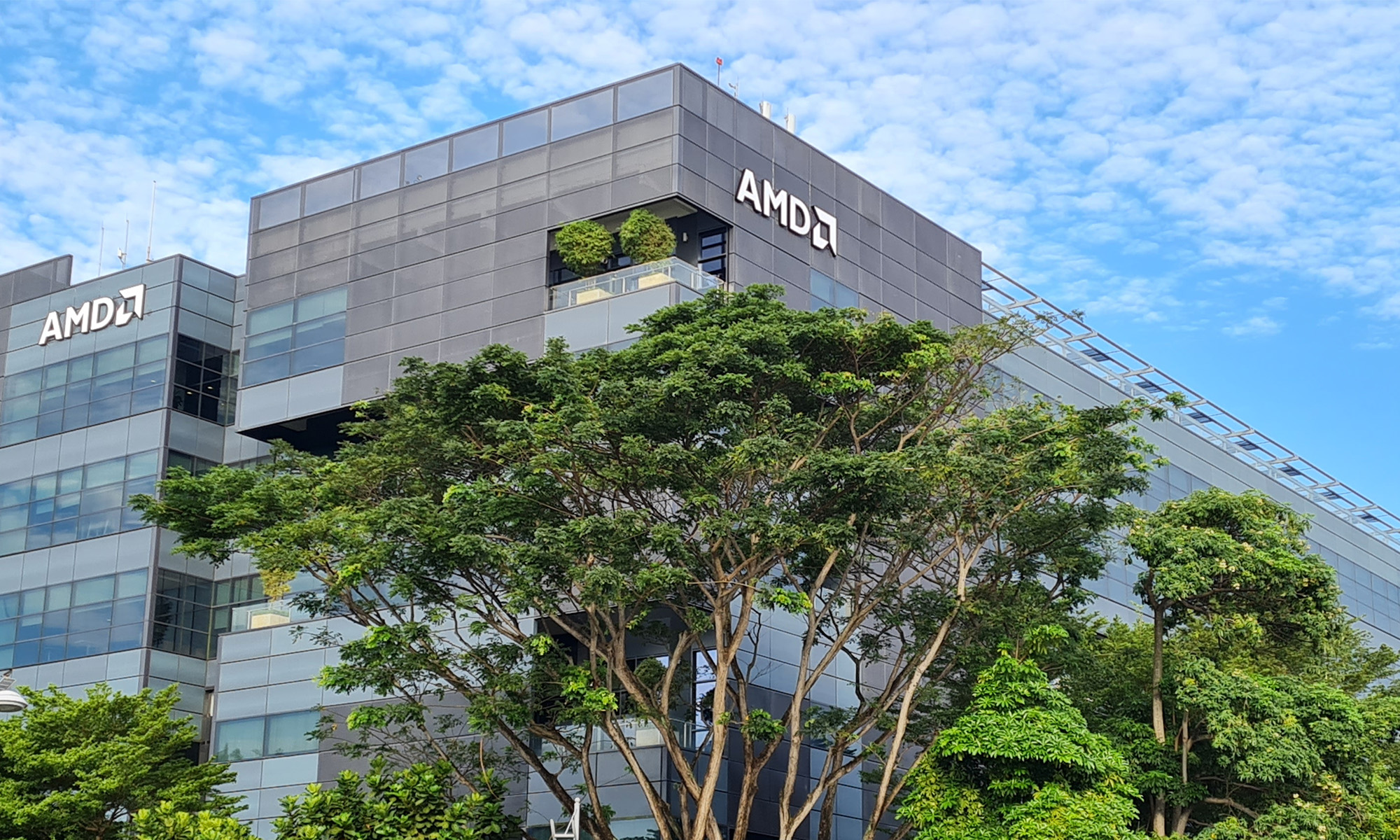
Image source: AMD.
Growth returned to Advanced Micro Devices (AMD +0.10%) during the second quarter, with the company reporting far higher revenue than analysts were expecting. AMD still posted a loss after backing out a one-time gain from the formation of its assembly and testing joint venture, but that loss was smaller compared to the prior-year period.
The stock surged on the news, with investors betting that AMD's second-quarter results foretell a turnaround during the second half of the year. While AMD showed progress, there are still a few items that need to fall into place before AMD will be able to produce sustained growth and return to profitability. Here's what investors need to know about AMD's second quarter.
Trouncing the estimates
AMD reported second-quarter revenue of $1.03 billion, up 9% year over year and $69 million higher than analysts were expecting. The computing and graphics segment, which includes the company's PC CPUs and GPUs, generated $435 million of revenue, up 15% year over year. AMD attributed the increase in sales to higher demand for its notebook processors and GPUs.
The semi-custom segment, which includes game console SoCs as well as embedded and enterprise products, produced $592 million of revenue during the quarter, up 5% year over year. As AMD's share of a shrinking PC market has declined in recent years, its semi-custom business has been a bright spot for the company. The second quarter was no exception.
AMD produced a non-GAAP loss of $40 million, or $0.05 per share, down from a loss of $131 million, or $0.17 per share, during the prior-year period. The average analyst estimate called for a loss of $0.08 per share. Non-GAAP operating profit was positive at $3 million, a milestone that AMD heralded in its earnings press release. The company had previously projected that it would return to non-GAAP operating profitability during the second half of the year.
On a GAAP basis, AMD produced an operating loss of $8 million and a net profit of $69 million, or $0.08 per share. A one-time gain of $150 million related to the company's assembly and test joint venture boosted GAAP earnings. Excluding this gain and the related taxes, GAAP net income would have been a loss of about $54 million.
Improvements in profitability came from both segments. The computing and graphics segment produced an operating loss of $81 million, down from a loss of $147 million during the prior-year period. The semi-custom segment offset that loss with an $84 million operating profit, up from just $27 million, with $11 million of operating costs not attributed to either segment. Higher revenue and gross margin, as well as a $26 million licensing gain, drove the improvements compared to the same period last year.
Looking ahead
AMD expects its revenue to grow sequentially by 18% during the third quarter, to roughly $1.21 billion. That would represent year-over-year revenue growth of about 14% if AMD hits its guidance. The third quarter is always the strongest for the semi-custom business, with game console inventory being built up for the holiday season, but AMD expects to report year-over-year growth in that segment as well.
AMD reiterated its guidance for revenue growth in 2016 and non-GAAP operating profitability during the second half of the year. Strong semi-custom sales along with the launch of AMD's Polaris graphics cards are expected to drive the company's results. The RX 480, a mainstream card, was launched at the end of June, and AMD will be filling out its lineup of Polaris graphics cards throughout the rest of the year.
While a return to revenue growth and non-GAAP profitability are two important steps in AMD's turnaround, producing GAAP profits excluding one-time gains will require the company to increase its revenue further. Polaris may help AMD win some market share back from NVIDIA, which has built a commanding lead over the past couple of years in the graphics card market. And Zen, AMD's upcoming line of CPUs, is expected to make the company more competitive against Intel.
The success of Polaris and Zen will ultimately determine whether AMD's turnaround gains traction. If either fails to live up to expectations, the signs of progress AMD reported during the second quarter may not mean much in the long run. For now, though, AMD investors are rightfully celebrating the first genuinely positive results from AMD in quite some time.






